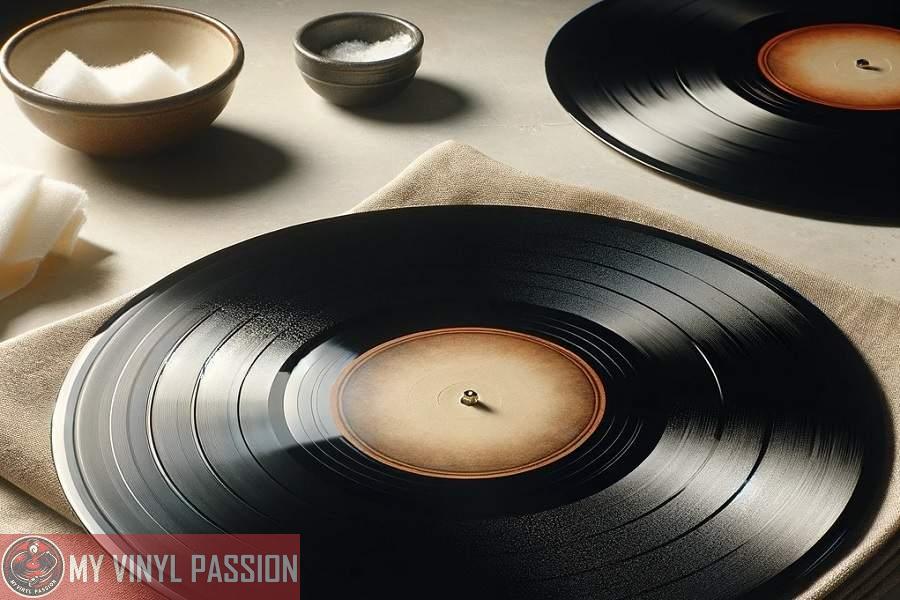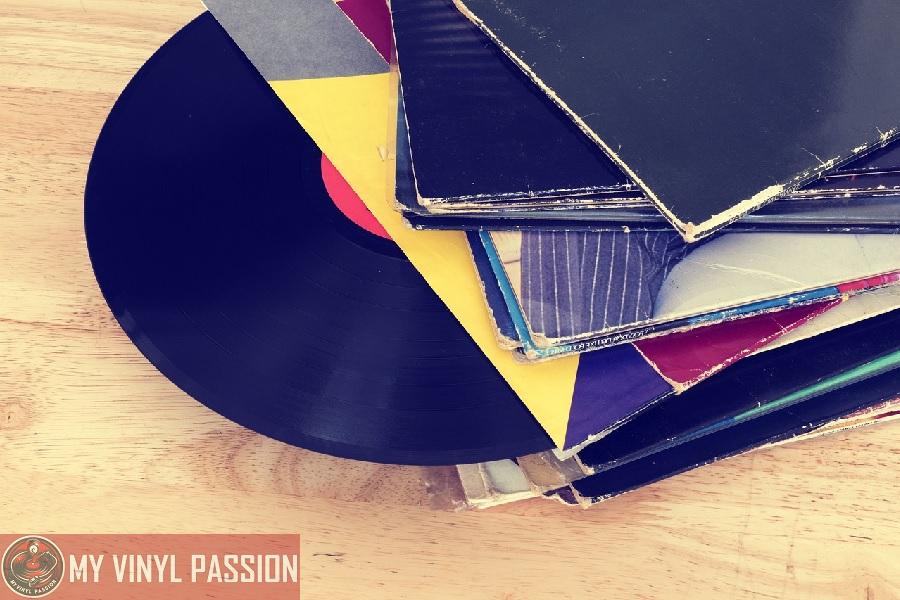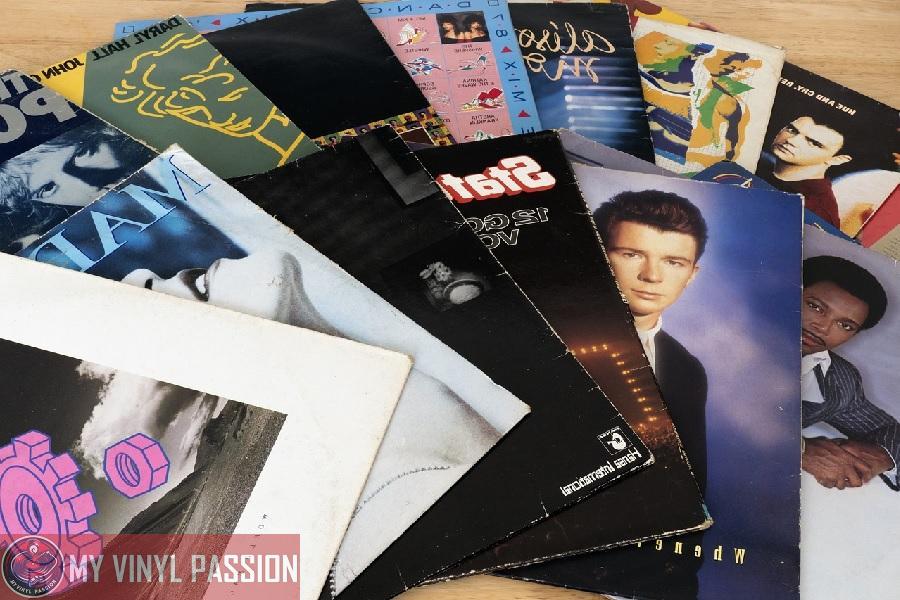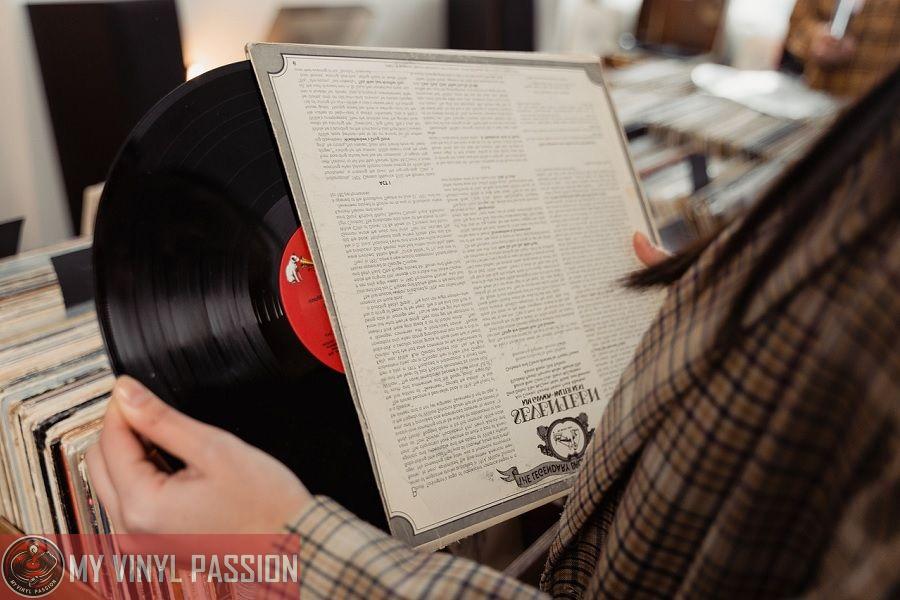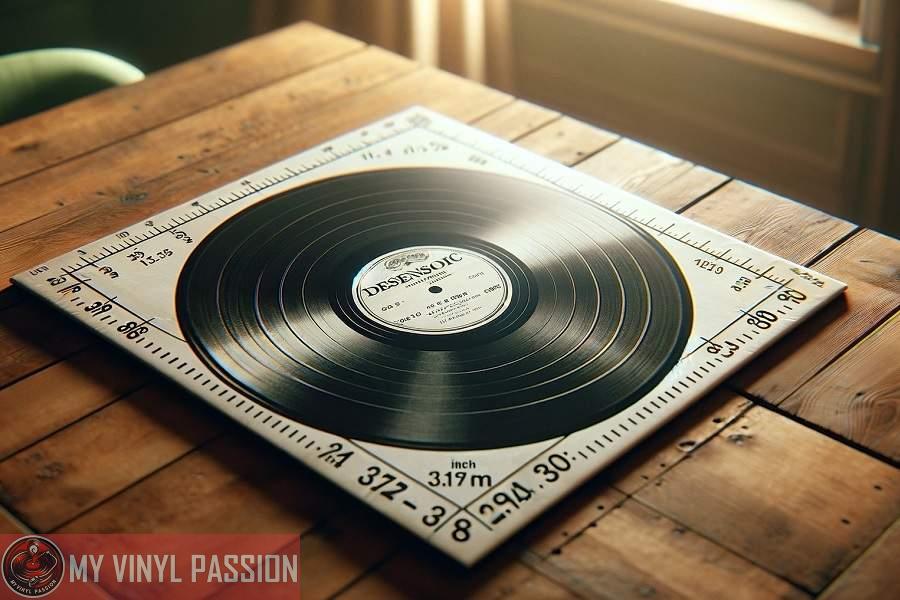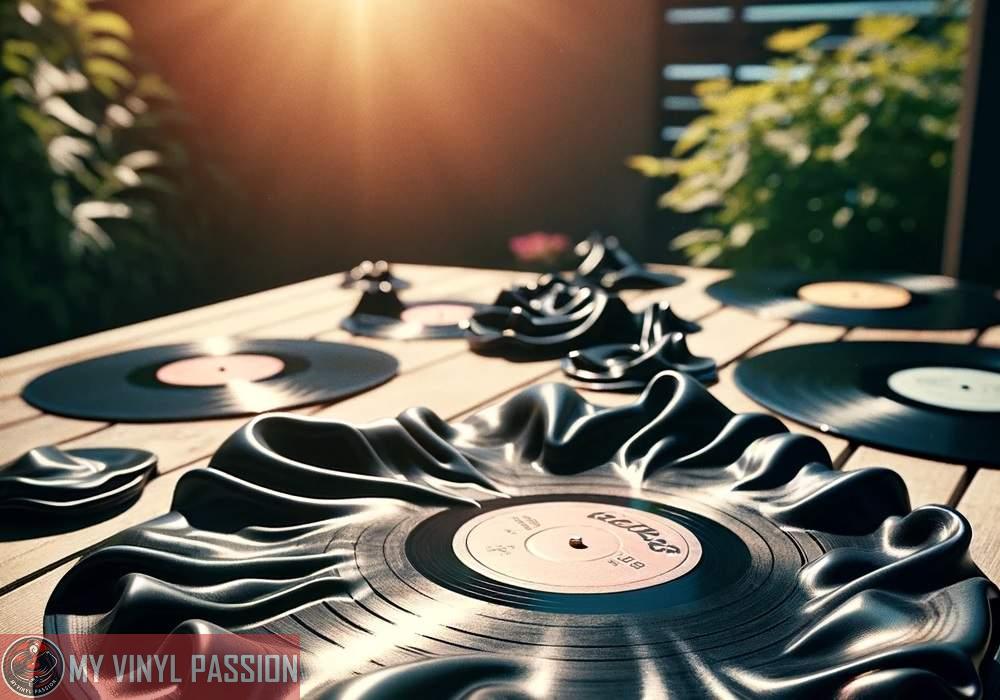Vinyl records have made a significant comeback in recent years, with enthusiasts enjoying the distinct sound quality they provide. As a vinyl record collector, you know how essential it is to take good care of your collection to maintain its exceptional sound and longevity.
One key aspect in preserving your vinyl records is knowing how often they should be cleaned.
Understanding how often to clean your vinyl records involves considering factors such as the level of visible dust or dirt, the amount of surface noise, and the frequency of use. It is vital to clean your records before each session to maximize their lifespan and sound quality.
Visibly dirty records must always be cleaned, whether you’re going to play them immediately or return them to their sleeves. Moreover, performing regular maintenance on your vinyl records can significantly reduce the need for deep cleans.
In Summary
Cleaning vinyl records before each use improves sound quality and preserves their lifespan
Routine maintenance and handling help reduce the need for deep cleaning
Visible dust, dirt, and surface noise indicate that a vinyl record should be cleaned
Understanding Vinyl Record Care
Importance of Regular Cleaning
Proper vinyl record cleaning is essential in maintaining the longevity and sound quality of your collection. Regular cleaning helps to remove dust, dirt, and other debris that can accumulate on your records over time. By keeping your records clean, you can minimize surface noise, such as pops and hissing, which can detract from the listening experience.
- Improve sound quality: Thorough cleaning can keep your vinyl records free from unwanted noise and static.
- Preserve the record’s lifespan: Regular care can prevent permanent damage to the record’s grooves.
- Maintain the integrity of the vinyl: Proper handling and cleaning can slow down the natural deterioration of the vinyl material.
Cleaning your records on a regular basis can help them to maintain their original sound and integrity.
Recognizing Dirt and Static Issues
When it comes to record care, it is important to know when your vinyl records require cleaning. Here are some common signs of dirt and static issues on your records:
- Visible dust or debris on the record surface. It is important to clean this up before playing the record to avoid damaging the grooves or the stylus.
- Audible surface noise during playback, such as pops, hissing, or crackling. This may indicate the presence of dirt or dust in the grooves.
- Static electricity causing the record to attract dust particles. This can also cause unwanted noise during playback.
If you notice any of these issues, gently brush off the dust particles before each use to reduce the need for deep cleans. You can also look into using vinyl record cleaning solutions and microfiber cloths for more thorough cleaning.
By understanding the importance of regular cleaning and recognizing dirt and static issues on your vinyl records, you can better preserve your collection and enjoy a high-quality listening experience.
Preparing for Cleaning
Essential Cleaning Supplies
Before you start cleaning your vinyl records, it’s crucial to gather the essential supplies to ensure a smooth and efficient process. Here’s a list of items you’ll need:
- Cleaning brush: A soft, anti-static cleaning brush is a must-have to remove dust and debris without damaging the delicate grooves on your vinyl.
- Microfiber cloth: A lint-free microfiber cloth is useful for gently wiping the surface of the record.
- Cleaning solution: Use a dedicated vinyl cleaning solution or make your own by combining distilled water and a small amount of mild dish soap.
- Distilled water: Ensure you use distilled water to avoid any impurities or minerals that could damage your vinyl records.
- Optional: A record vacuum cleaner can be a helpful tool for a deep, thorough clean.
Initial Inspection of Vinyl Records
Before you commence the cleaning process, it’s essential to carefully inspect your vinyl records to identify any problem areas that might need closer attention.
- Visual inspection: Carefully examine the surface of your record, looking for visible dirt and debris lodged in the grooves.
- Feel for rough spots: Run your fingers gently on the surface (avoiding the grooves), checking for any uneven or rough spots that might require additional cleaning attention.
- Check the label: Ensure the label is in good condition before proceeding to clean; if it is damaged or peeling, you may need to take extra precautions to avoid damaging it further.
Once you have gathered your cleaning supplies and conducted an initial inspection of your vinyl records, you’ll be ready to begin the cleaning process with confidence. Remember, proper care and maintenance of your vinyl collection will preserve its quality for years to come.
Manual Cleaning Techniques
Gentle Cleaning with Microfiber Cloths
One effective method to maintain your vinyl records is by using microfiber cloths. These cloths can remove dust and debris without damaging the delicate grooves. To start, lay the vinyl down on a soft, flat surface. Hold the microfiber cloth with your hand and gently wipe the surface of the record in a circular motion, following the direction of the grooves. Make sure you apply minimal pressure, as too much force can cause scratches.
- Benefits of Microfiber Cloths:
- Efficiently removes dust and dirt
- Soft and gentle, preventing scratches
- Reusable and cost-effective
It’s essential to clean your microfiber cloths regularly to avoid transferring dust or debris onto other records. Wash them with mild detergent and let them air dry to maintain their effectiveness.
Using a Record Brush Correctly
Another popular method is using a record brush for cleaning vinyl records. These brushes typically have soft, fine bristles designed to lift dust, dirt, and static electricity from the surface of the record. The most common type of record brush is an anti-static brush, which reduces static buildup that attracts dust particles.
To effectively clean your vinyl records:
- Place the record on a flat, non-abrasive surface.
- Position the record brush at the edge of the record, making sure it’s in contact with the grooves.
- Use light pressure and slowly move the brush in the direction of the grooves, from edge to the center of the record.
- Carefully lift the brush upward, removing it from the surface while still holding the bristles against the record.
- Clean the brush regularly to eliminate dust accumulation.
Remember to store your vinyl records and brushes properly to minimize dust and dirt exposure. By using microfiber cloths and record brushes correctly, you can ensure your vinyl records remain clean and in optimal listening condition.
Wet Cleaning Process
Preparing the Cleaning Solution
To begin the wet cleaning process for your vinyl records, it’s important to prepare the right cleaning solution. One popular choice is a mix of distilled water and isopropyl alcohol. You can create your own vinyl record cleaning solution by combining 3 parts distilled water to 1 part isopropyl alcohol (90% or higher concentration is recommended). It’s essential to use distilled water, as tap water can contain minerals and impurities that may damage the vinyl surface.
You can also add a few drops of a mild, residue-free dish detergent to help remove any grease or stubborn dirt.
The Correct Method to Wet Clean
Once you have your cleaning solution prepared, follow these steps to properly wet clean your vinyl records:
- Remove the record from its cover and inner sleeve. To avoid potential damage caused by contact with other parts of the cover, handle the vinyl record by its edges or the label.
- Place the record on a clean, soft surface such as a microfiber cloth or a record cleaning mat that is specifically designed for vinyl records.
- Apply the cleaning solution to a soft, lint-free cloth or a record cleaning brush. Avoid using paper towels or tissues, as they can leave behind lint or scratch the delicate grooves.
- Clean the vinyl record in a circular motion, following the grooves. Start from the outer edge and work your way to the center, being careful not to touch the label.
- Let the record air-dry completely before placing it back into its inner sleeve. This may take a few minutes; make sure there is no residual moisture as it might lead to mold growth or damage.
By following these guidelines, you can preserve the quality of your vinyl records and enjoy their unique sound for years to come. Remember that wet cleaning should be done only when necessary, as excessive cleaning can cause wear on the records.
Caring for Your Stylus
Maintaining your turntable’s stylus is crucial for optimal sound quality and the longevity of your vinyl records. In this section, we will discuss safe stylus cleaning practices to help you keep your stylus in tip-top shape.
Safe Stylus Cleaning Practices
A clean stylus is essential for reproducing accurate sound and preventing damage to your records. Here are some steps to follow when cleaning your stylus:
- Inspect the stylus: Before cleaning, inspect your stylus for any visible debris or dust. Use a magnifying glass or smartphone camera to zoom in, if necessary.
- Use a stylus brush: A specialized stylus brush is recommended for safe and effective cleaning. Gently brush the stylus from back to front, in the direction of the needle tip. Avoid side-to-side or front-to-back motions, which can damage the stylus.
- Dry vs. liquid cleaning: Most of the time, using a dry brush is enough to remove dust and debris. But, if you notice stubborn buildup on your stylus, you can use a drop of cleaning fluid specifically designed for stylus cleaning. Apply the fluid to the brush (not directly to the stylus) and then carefully clean the stylus, following the same back-to-front motion.
- Frequency: It’s best to clean your stylus after playing each side of a record. This routine will help minimize debris buildup and protect your vinyl records from potential damage.
By following these safe stylus cleaning practices, you can ensure the best possible performance from your turntable while preserving the quality of your vinyl collection.
Maintenance of Vinyl Records
Effective Storage Solutions
Proper storage is essential for preserving your vinyl records. Choose archival-quality inner sleeves to protect your records from dust, dirt, and scratches. The best sleeves are acid-free and contain no PVC, which can leach onto the records over time.
You can store your record collection vertically on sturdy shelves, ensuring they are not leaning or tightly packed. To prevent damage like warping, keep them away from direct sunlight, radiators, or other heat sources. Additionally, maintain a consistent temperature and humidity level in the room where you store your vinyl records.
Handling Techniques to Avoid Damage
When handling your vinyl records, always follow these precautions:
- Avoid touching the grooves. Instead, handle the record by the edges or the label area in the center.
- Use clean hands or wear gloves to reduce the chance of transferring oils from your skin to the records.
- Keep your turntable and stylus clean, as a dirty needle can cause damage to the vinyl grooves.
As mentioned in the Martha Stewart’s guide, you should inspect your records visually each time before you play them. If you see any visible dust or dirt, always clean them before playing. New or used vinyl records acquired should also be cleaned to ensure the best sound quality and longevity.
By using these effective storage solutions and handling techniques, you can prolong the life of your vinyl records and enjoy their unique sound for years to come.
Advanced Cleaning Equipment
Record Cleaning Machines
Record cleaning machines are an excellent choice for vinyl enthusiasts looking to maintain a pristine collection. These machines combine a vinyl record cleaning solution with gentle brushes to loosen debris, followed by a vacuum system to remove any remaining dust and dirt. Some popular models include the VPI, Okki Nokki, and Pro-Ject VC-S2. While these machines can be costly, they are an ideal investment for those with sizeable record collections or those seeking professional-level cleaning and maintenance.
Investment in Specialized Tools
Apart from record cleaning machines, there are specialized tools for keeping your vinyl records in top condition. A robust record cleaning kit typically consists of essential items such as a carbon fiber brush, a cleaning mat, lint-free cloths, and a cleaning solution. Here’s a brief overview of these tools and their uses:
- Carbon fiber brush: Essential before each play, a carbon fiber brush gently removes dust without damaging the grooves of your records. It is designed to reduce static build-up and prevent any debris from getting caught in the stylus.
- Cleaning mat: A vinyl record cleaning mat provides a safe and stable surface for manual cleaning. It is specifically designed to prevent the record from slipping during the cleaning process.
- Lint-free cloths: These ultra-soft, non-abrasive cloths are perfect for drying and removing impurities after applying a cleaning solution.
- Cleaning solution: Consisting of a mixture of purified water and mild detergent, a professional cleaning solution effectively removes grime without damaging vinyl.
Investing in advanced cleaning equipment, such as record cleaning machines and specialized tools, will significantly improve the longevity of your vinyl records and enhance your listening experience. By regularly maintaining your collection with these tools, you will protect your beloved vinyl and enjoy clear, dynamic sound quality.
Common Mistakes to Avoid
When it comes to cleaning your vinyl records, there are several common mistakes to avoid in order to preserve their quality. Adhering to a proper cleaning technique and steering clear of these pitfalls will ensure that your records remain in pristine condition.
Using household cleaning products is a big no. These products often contain chemicals that can damage your records or leave residue behind. Instead, opt for a specialized vinyl record cleaning solution or a mix of distilled water and a small amount of isopropyl alcohol.
Overusing water or leaving excess water during the cleaning process can seep into the grooves and cause damage. Always use a minimal amount of cleaning solution, and make sure to dry the record thoroughly with a soft, lint-free cloth afterward.
Accidentally causing scratches is another common mistake. Avoid using any abrasive materials or applying too much pressure when cleaning. Gently wipe your records in a circular motion, following the grooves to prevent any unwanted scratches.
Relying on compressed air to remove dust and debris may seem like a quick and easy solution, but it can actually harm your records. The force of the air can embed particles deeper into the grooves, making it harder to clean them effectively.
Lastly, it’s essential to be realistic about your expectations. Cleaning your records can certainly improve their sound quality and extend their lifespan, but it may not always be able to restore them to perfect condition. If your vinyl records have suffered severe damage or wear, proper cleaning might help to some extent but may not completely restore the original sound.
By avoiding these common mistakes and following proper cleaning techniques, you can effectively maintain your vinyl records and preserve their quality for years to come.
Frequently Asked Questions
What household items are safe for cleaning vinyl records?
While there are many commercial cleaning solutions available, common household items can also be used to clean vinyl records. Distilled water, gentle dish soap, and a soft microfiber cloth can be used to clean and preserve your records safely. It’s important to use distilled water as it doesn’t contain impurities that may affect the vinyl surface. Be gentle with your cleaning process to avoid scratching or damaging the record.
Is it advisable to use alcohol-based cleaners on vinyl records?
Using alcohol-based cleaners on vinyl records can be risky. Some experts suggest that a mixture of alcohol and distilled water can be a safe and effective solution; however, it’s essential to use a low concentration of alcohol (around 10-20%) to avoid potential damage. There is potential for alcohol to dissolve the record’s protective layer if used in high concentrations or excessively. Consider using specialized vinyl cleaning solutions that are specifically designed for safe use.
What are the benefits of using a specialized vinyl cleaning kit?
A specialized vinyl cleaning kit comes with all the necessary tools and products designed to clean vinyl records safely. These kits often include cleaning solutions, microfiber cloths, velvet pads, brushes, and sometimes even machines for deep cleaning or vacuuming the grooves. Using a kit specifically designed for vinyl records ensures a gentle and thorough cleaning which can help maintain the sound quality and longevity of the records.
How does soap and water compare to other methods for cleaning vinyl records?
Soap and water can be an effective and affordable method for cleaning vinyl records, especially for removing surface dirt and dust. However, compared to other methods, it may not be the most efficient solution for deep cleaning or removing stubborn dirt from the grooves. Devices like record vacuum cleaners and ultrasonic cleaners may provide a more thorough cleaning option, particularly for collectors or enthusiasts who want to maintain a pristine collection.
How frequently should records be cleaned to maintain their quality?
Cleaning frequency can depend on the individual record and how it’s handled. Generally, it’s advisable to clean records whenever you notice a significant amount of surface noise, such as pops or hissing during playback, which might indicate dirt buildup in the grooves. According to Peak Vinyl, frequent listeners might need to clean their records every few playbacks to maintain sound quality, whereas records stored or played less frequently may only need cleaning as needed.
Can using just water be effective for cleaning vinyl records?
Using only distilled water for cleaning vinyl records can be effective at removing surface dust and dirt. However, the addition of a gentle cleaning agent like dish soap or a specialized vinyl cleaner can improve the cleaning process by cutting through oils and more stubborn dirt. Remember to always use distilled water, as it is free of impurities that may leave residue or damage the record surface.
